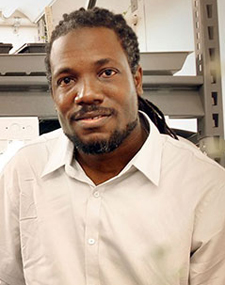This Is What Science Looks Like at NC State: Cranos Williams


Editor’s note: This post comes from Cranos Williams, an associate professor of electrical and computer engineering at NC State. The post is part of an ongoing series that we hope will highlight the diversity of researchers in science, technology, engineering and mathematics. The series is inspired by the This Is What A Scientist Looks Like site.
My name is Cranos Williams and I am an associate professor in the electrical and computer engineering department at NC State University. I am originally from the island of St. Thomas in the U.S. Virgin Islands.

My grandmother on my mother’s side is from Puerto Rico and my grandmother on my father’s side is from Tortola, British Virgin Islands, so I grew up in a very culturally diverse household. I obtained my Ph.D. and M.S. degrees in electrical engineering from NC State in 2008 and 2002, respectively. I obtained my B.S. in electrical engineering from NC A&T State University in 2001. I have an adventurous spirit and will try anything once (sometimes twice just to make sure I didn’t like it). I enjoy exercising, dancing, and all around having a good time. My favorite sports include racquetball and basketball. I also enjoy traveling and experiencing new cultures. My ultimate goal is to travel, at least once, to all seven continents.
Research-wise, I am the director of the EnBiSys research lab. The lab focuses on developing computational and analytical solutions for modeling and understanding the biological processes that impact plant growth, development, and adaptation. Specifically, my research develops methodologies that are familiar to other areas of electrical engineering (e.g. computational intelligence, system identification, uncertainty propagation, experimental design, nonlinear systems analysis and control, signal processing) to predict the impact that internal (genetic) and external (environmental) perturbations have on overall plant response (e.g. biomass, cellulose content, and plant cell wall strength).
This research will have direct implications on efficient biofuel production, plant adaptability to pollution and climate change, and improvement of plant defenses to pathogens and pests.
- Categories:


